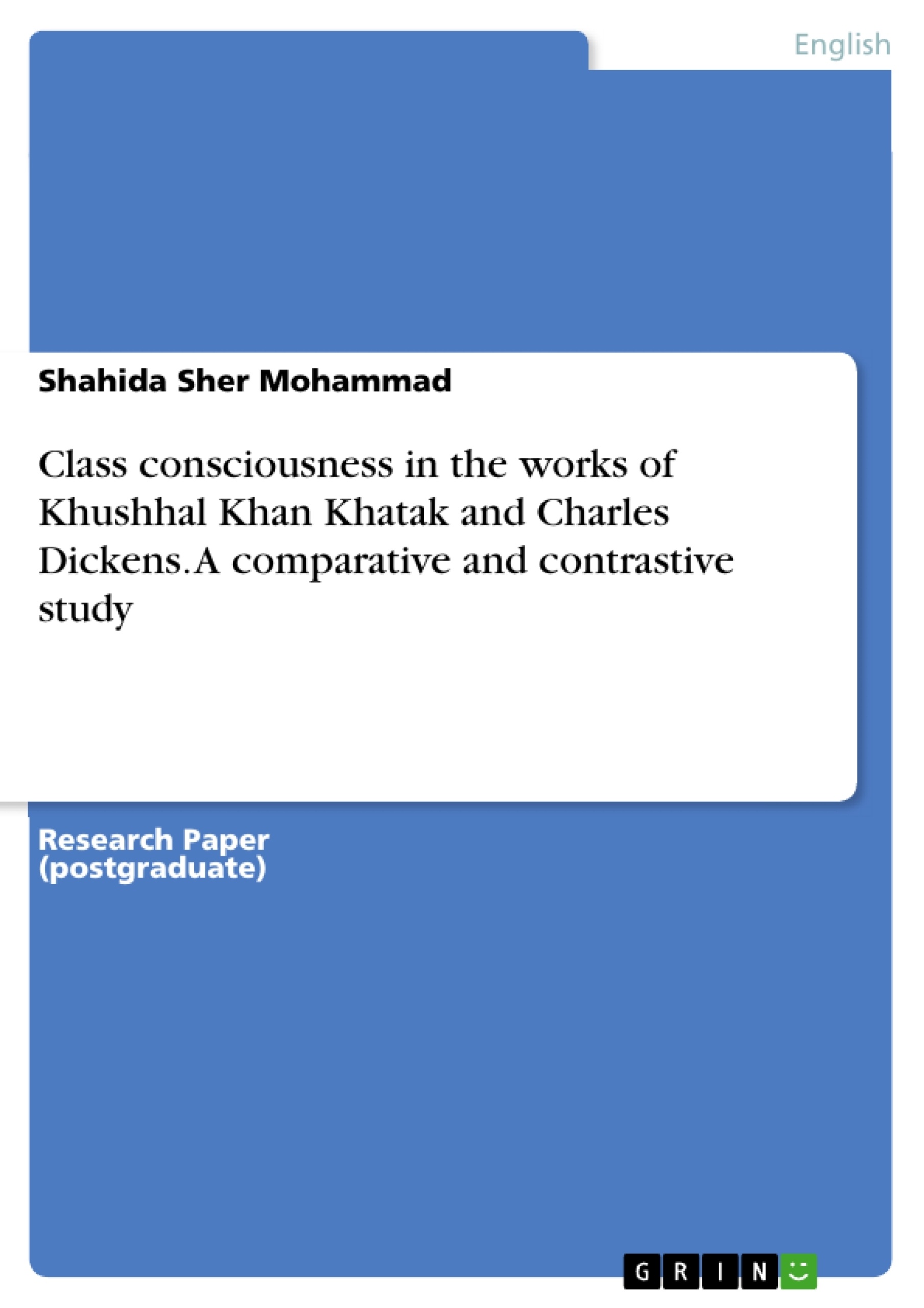This research paper tends to seek the comparison and contrast of class-consciousness between the two great writers of world literature, Khushal Khan Khatak and Charles Dickens. The former belongs to the seventeenth-century feudal sub-continent of South Asia and latter comes from the industrialised capitalist Victorian age.
They depicted the economic plight, misery and suffering of the toiling classes in their writings in the different historical ages to project different visions of human situation. Both the writers in spite of different historical ages, cultures, literary genres, socio-economic, political and class backgrounds possess one thing in common, which is the class-consciousness.
The comparison and contrast will be conducted in this research study in terms of Marxist class-analysis of the two authors belonging to the two different periods of history. Applying the Marxist hermeneutics to the textual analysis of the texts of the both authors, the present research study tries to introduce new a portrait and re-evaluation of the personages of the two greatest literary writers in an innovative perspective.
Frequently asked questions
What is the abstract about?
The research paper compares and contrasts the class-consciousness between Khushal Khan Khattak and Charles Dickens. It explores their depiction of the economic plight and suffering of the working classes in different historical ages. The comparison is conducted through a Marxist class-analysis.
What are the key terms associated with this research?
The key terms include Feudalism, Capitalism, Class-consciousness, Social justice, and Economic equality.
Who was Khushal Khan Khattak?
Khushal Khan Khattak was a poet, prose writer, warrior, Islamic scholar, philosopher, and thinker of the seventeenth century, born in a prominent Pashtoon family in South Asia.
What was Khushal Khan Khattak known for?
He was known for his poetry, prose, and his strong connection to Pashto language and literature. He was also known for his opposition to the Mughal Empire.
Who was Charles Dickens?
Charles Dickens was a great novelist born in England. He experienced harsh conditions of child labour and wrote about it in his novels and how he faced cruel behaviour from the social formation.
What are some of Charles Dickens' major works?
Major works include Oliver Twist, David Copperfield, Hard Times, A Tale of Two Cities, and Great Expectations.
What themes are explored in Charles Dickens' novels?
Dickens explored themes of class division, poverty, social injustice, and the impact of the Industrial Revolution on the toiling masses.
What is the literature review about?
The literature review includes a summary of many books and research articles available on Khushal Khan Khattak and Charles Dickens. Many scholars have said that Khushal Khan Khattak was not only an Afghan nationalist, but a great humanist. Allama Muhammad Iqbal considers Khushal Khan as a great Afghan nationalist.
What is the comparison between Khushal Khan Khattak and Charles Dickens about?
The comparison explores how both writers, despite their different backgrounds, were class-conscious egalitarians. Khattak, from a feudal background, depicted the hardships of serfs. Dickens, from a poor background, portrayed the struggles of the working class during the Industrial Revolution.
What is the conclusion of the research paper?
The research study concludes that both Khushal Khan Khattak and Charles Dickens were class-consciousness egalitarians who depicted the problems and miseries of the poor realistically and critically and sought socio-economic justice.
What are some of the references mentioned in the text?
Some references include works by Abdussamad, Alton, Bloom, Brantlinger, Dickens, Feroziuddin Begum, Ford, Iqbal, Biddulph, Mar'atuttoyibah, Rasa and Shaw.
- Quote paper
- Shahida Sher Mohammad (Author), 2016, Class consciousness in the works of Khushhal Khan Khatak and Charles Dickens. A comparative and contrastive study, Munich, GRIN Verlag, https://www.grin.com/document/338073



